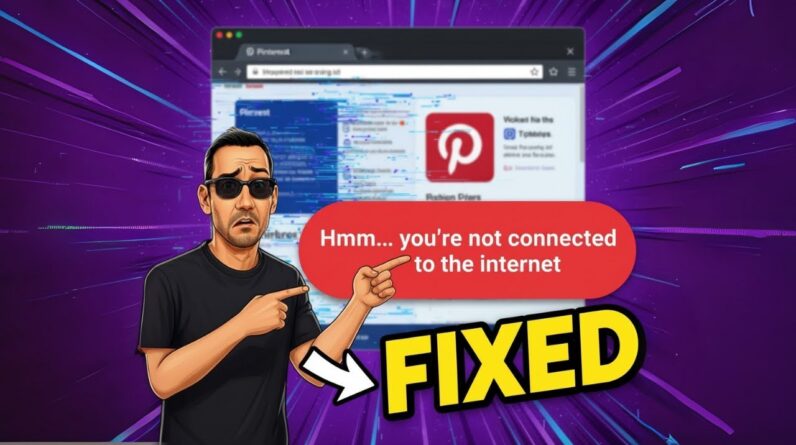
If you’ve been wanting to jump into the world of video marketing but are unsure where to begin, you’re in the right place! This article will provide you with the essential tips and guidance to get started on your video marketing journey. From choosing the right platform to scripting compelling content, we’ll break it down for you step by step. So, grab your camera and let’s embark on this exciting adventure together!
Choosing a Platform
Researching Video Hosting Platforms
When it comes to video marketing, one of the first things you need to do is choose the right platform to host your videos. There are numerous video hosting platforms available, each with its own set of features and benefits. Take the time to research and compare different platforms to find the one that best suits your needs. Look for a platform that offers high-quality video playback, easy video management, and reliable hosting services. Consider factors such as cost, bandwidth limitations, and customization options when making your decision.
Considering Social Media Platforms
While video hosting platforms are essential for hosting and managing your videos, social media platforms play a crucial role in expanding your reach and engaging with your target audience. Consider the social media platforms that align with your marketing goals and target audience. Facebook, YouTube, Instagram, and LinkedIn are popular options for sharing and promoting your video content. Each platform has its own user demographic and features, so it’s important to choose the ones that best suit your target audience and marketing objectives.
Defining Goals and Target Audience
Identifying Marketing Objectives
Before diving into video marketing, it’s vital to clearly define your marketing objectives. What do you hope to achieve with your video marketing efforts? Do you want to increase brand awareness, drive website traffic, generate leads, or boost sales? Identifying specific marketing objectives will help you create targeted video content that aligns with your goals. By having a clear understanding of what you want to accomplish, you can tailor your videos to resonate with your audience and achieve measurable results.
Analyzing Target Audience
To create effective and engaging video content, you need to have a deep understanding of your target audience. Take the time to conduct thorough market research to identify your audience’s demographics, interests, and preferences. This will allow you to create videos that address their pain points, provide solutions, and grab their attention. By understanding your target audience, you can tailor your video content to resonate with them and increase the chances of achieving your marketing objectives.
Creating a Video Marketing Strategy
Setting a Budget
Before diving into video production, it’s crucial to establish a budget for your video marketing strategy. Consider factors such as production costs, equipment expenses, editing software, and promotional activities. Decide how much you’re willing to invest in each component and allocate your resources accordingly. Keep in mind that video production can range from simple DIY videos to high-end professional productions, so setting a budget will guide your decision-making process and ensure you make the most of your resources.
Establishing a Timeline
To stay on track and effectively execute your video marketing strategy, it’s important to establish a timeline. Determine when each phase of video production will take place, from scriptwriting to filming, editing, and promotion. Having a timeline will help you stay organized, set realistic goals, and ensure that your videos are released in a timely manner. Make sure to allow for flexibility in case of unexpected delays or changes in your marketing objectives.
Creating Engaging Video Content
Planning Video Concepts
When creating video content, it’s essential to plan and conceptualize your ideas before starting the production process. Brainstorm different video concepts that align with your marketing objectives and target audience. Consider the type of content that will resonate with your viewers, such as educational videos, product demonstrations, testimonials, or entertaining content. Develop a clear vision for each video concept, outlining the main message, visuals, and tone that you want to convey.
Writing Scripts
Scriptwriting is a crucial step in creating compelling and engaging video content. Start by outlining the key points you want to address in your video, ensuring they align with your marketing objectives. Craft a script that incorporates persuasive storytelling techniques, grabs your audience’s attention, and delivers your message effectively. Keep your script concise and easy to understand, using language that resonates with your target audience. Be sure to include a call-to-action at the end of each video to guide viewers towards the desired action.
Production and Editing
Filming and Equipment
When it comes to filming your videos, you have a range of options depending on your budget and production requirements. You can opt for professional videography equipment or use a smartphone camera with good video quality. Consider factors such as lighting, sound, and the overall visual aesthetic of your videos. Experiment with different filming techniques, angles, and locations to create visually appealing content. Remember to invest in a tripod or stabilizer to ensure smooth and professional-looking shots.
Editing Software and Techniques
Once you have captured your video footage, it’s time to edit and polish your content. Consider using video editing software that suits your skill level and editing needs. From simple editing programs to more advanced software, there are options available for every budget and proficiency level. Edit your videos to enhance the visual appeal, incorporate graphics or animations, and ensure a seamless flow. Pay attention to the pacing, transitions, and sound effects to create a professional and engaging final product.
Optimizing Videos for Search
Performing Keyword Research
To ensure that your videos reach your target audience, it’s vital to optimize them for search engines. Start by performing keyword research to identify relevant and popular search terms related to your video content. Incorporate these keywords naturally into your video titles, descriptions, and tags. This will increase the likelihood of your videos appearing in search results when users are looking for content similar to yours. Use tools such as Google Keyword Planner or YouTube’s search suggestions to find relevant keywords.
Optimizing Video Titles and Descriptions
The titles and descriptions of your videos are essential for attracting viewers and improving your search rankings. Craft compelling and concise titles that accurately represent the content of your videos and grab the attention of potential viewers. Similarly, write informative and keyword-rich descriptions that provide a clear overview of your video’s content. Include relevant links, keywords, and calls-to-action in your descriptions to encourage viewers to take further action, such as visiting your website or subscribing to your channel.
Promoting and Sharing Videos
Uploading to Video Platforms
Once your videos are ready, it’s time to upload them to your chosen video hosting platform. Take the time to optimize your video files for web playback, ensuring they load quickly and display in high quality. Follow the platform’s guidelines for file formats, aspect ratios, and video resolutions. Customize the video thumbnails, titles, and descriptions to accurately represent each video’s content and make them visually appealing. Make use of relevant tags and categories to help users discover your videos within the hosting platform’s search algorithm.
Sharing on Social Media
To maximize the reach of your video content, it’s essential to promote and share your videos on social media platforms. Create a social media marketing plan that outlines when and where you will share your videos. Craft engaging captions and include relevant hashtags to increase visibility. Engage with your audience by replying to comments, asking for feedback, and encouraging them to share your videos with their networks. Leverage the power of social media algorithms by creating shareable and engaging content that encourages likes, comments, and shares.
Monitoring and Analyzing Performance
Tracking Video Metrics
To gauge the success of your video marketing efforts, it’s crucial to track and analyze video metrics. Pay attention to metrics such as views, watch time, likes, comments, and shares. These metrics will provide insights into the performance of your videos and help you identify which content resonates most with your audience. Use analytics tools provided by your video hosting platform and social media platforms to track these metrics and gain a deeper understanding of your video’s impact.
Analyzing Viewer Engagement
In addition to basic video metrics, it’s important to analyze viewer engagement to assess the effectiveness of your video content. Look at metrics such as audience retention, click-through rates, and conversion rates to measure how audiences are interacting with your videos. Analyzing viewer engagement will give you insights into the effectiveness of your videos in capturing and maintaining audience attention. Use this information to refine your video marketing strategy and create content that consistently engages and resonates with your target audience.
Interacting with Viewers
Responding to Comments
One of the benefits of video marketing is the ability to engage directly with your audience. Take the time to respond to comments on your videos, whether they are questions, feedback, or compliments. Engaging with viewers builds trust, loyalty, and a sense of community around your brand. Respond in a timely and friendly manner, addressing any concerns or queries raised by your audience. By actively participating in the comment section, you can foster meaningful connections with your viewers and encourage them to continue engaging with your content.
Engaging with the Audience
Beyond responding to comments, actively engage with your audience through various channels. Consider conducting live Q&A sessions, hosting giveaways or contests, or creating interactive videos that encourage viewer participation. Encourage your audience to share their thoughts, experiences, and ideas related to your videos. By fostering a sense of community and actively involving your viewers, you can cultivate a loyal and engaged audience that is more likely to share and promote your video content.
Constantly Improving the Strategy
Testing New Ideas
To stay ahead in the ever-evolving world of video marketing, it’s important to continuously test new ideas and explore innovative strategies. Experiment with different video formats, content styles, and techniques to keep your content fresh and engaging. Monitor the performance of your videos and leverage audience feedback to fine-tune your approach. Don’t be afraid to step outside your comfort zone and try new concepts or platforms. Embracing a culture of experimentation will allow you to discover what works best for your brand and audience.
Collecting Feedback
Another way to constantly improve your video marketing strategy is by collecting feedback from your audience. Encourage viewers to leave comments, reviews, or suggestions on your videos or social media platforms. Pay attention to the feedback and take it into consideration when planning future video content. Use surveys or polls to gather more structured feedback and insights from your audience. Actively seeking and implementing feedback will help you refine your video marketing strategy and ensure that your content continues to resonate with your target audience.
In conclusion, getting started with video marketing requires thoughtful planning, strategic execution, and a clear understanding of your goals and target audience. By choosing the right platform, defining your marketing objectives, and creating engaging content, you can effectively promote your brand, engage with your audience, and achieve measurable results. Constantly monitoring performance, interacting with viewers, and continually improving your strategy will help you stay ahead of the curve and maximize the benefits of video marketing for your business.






